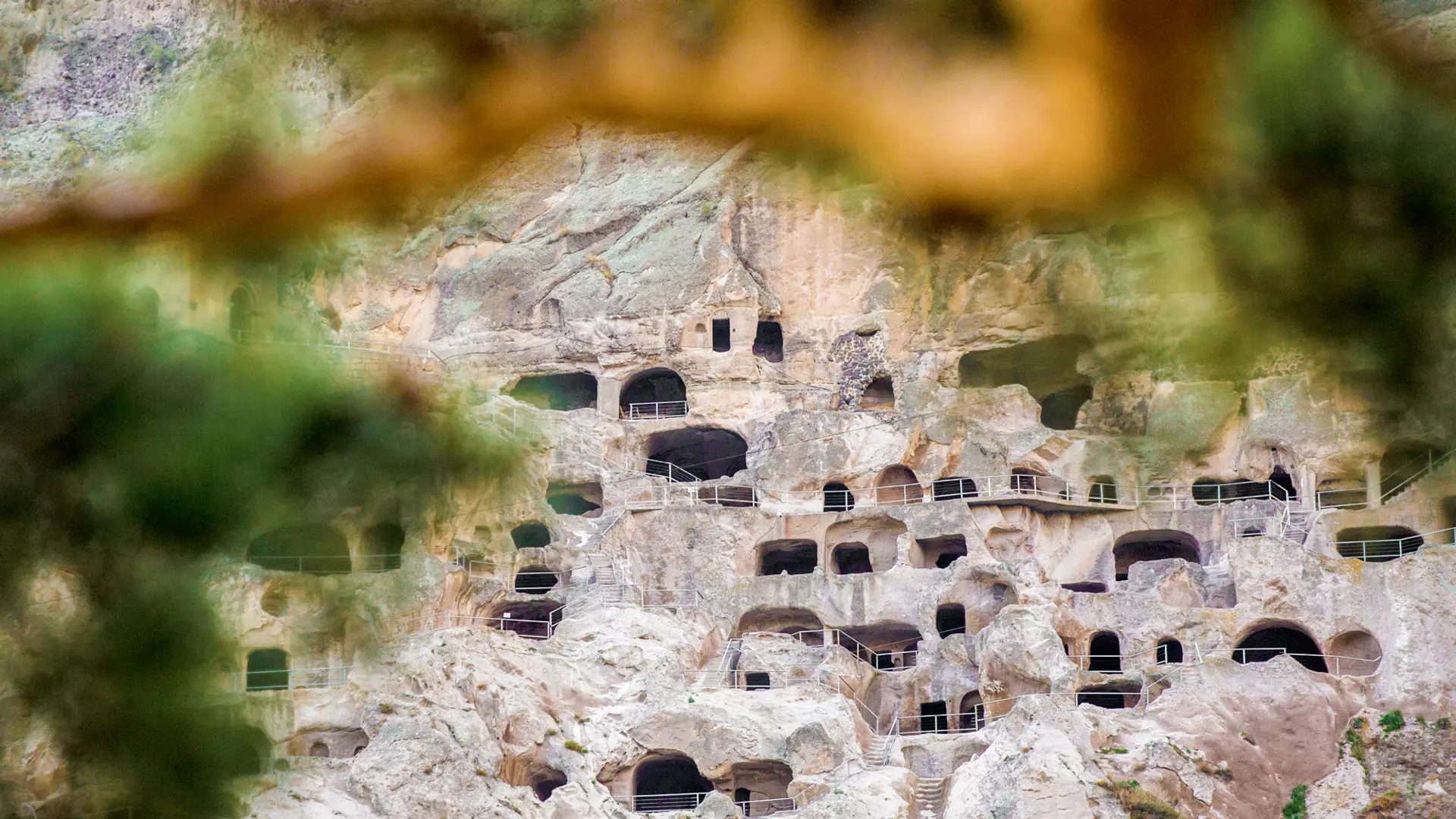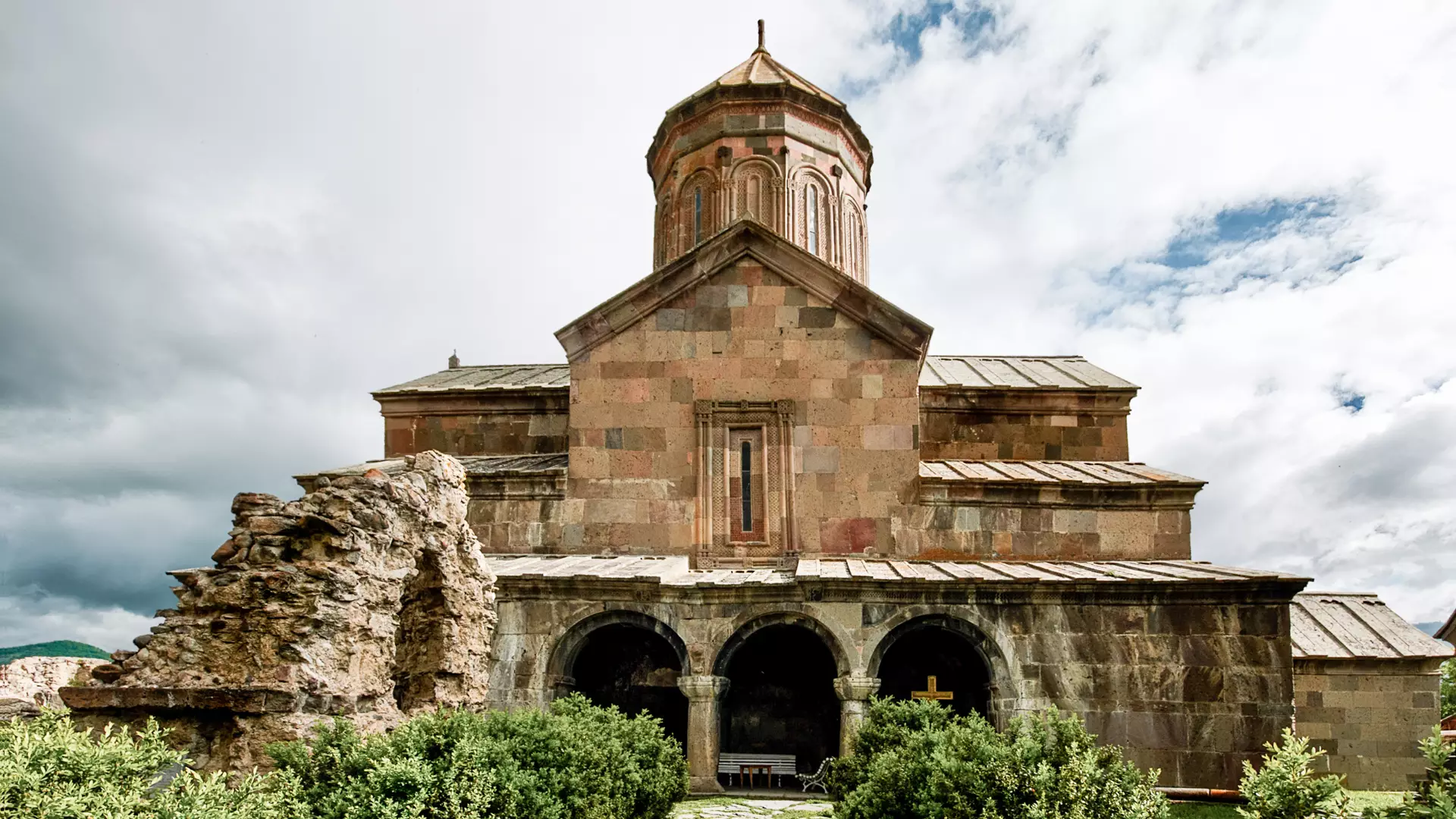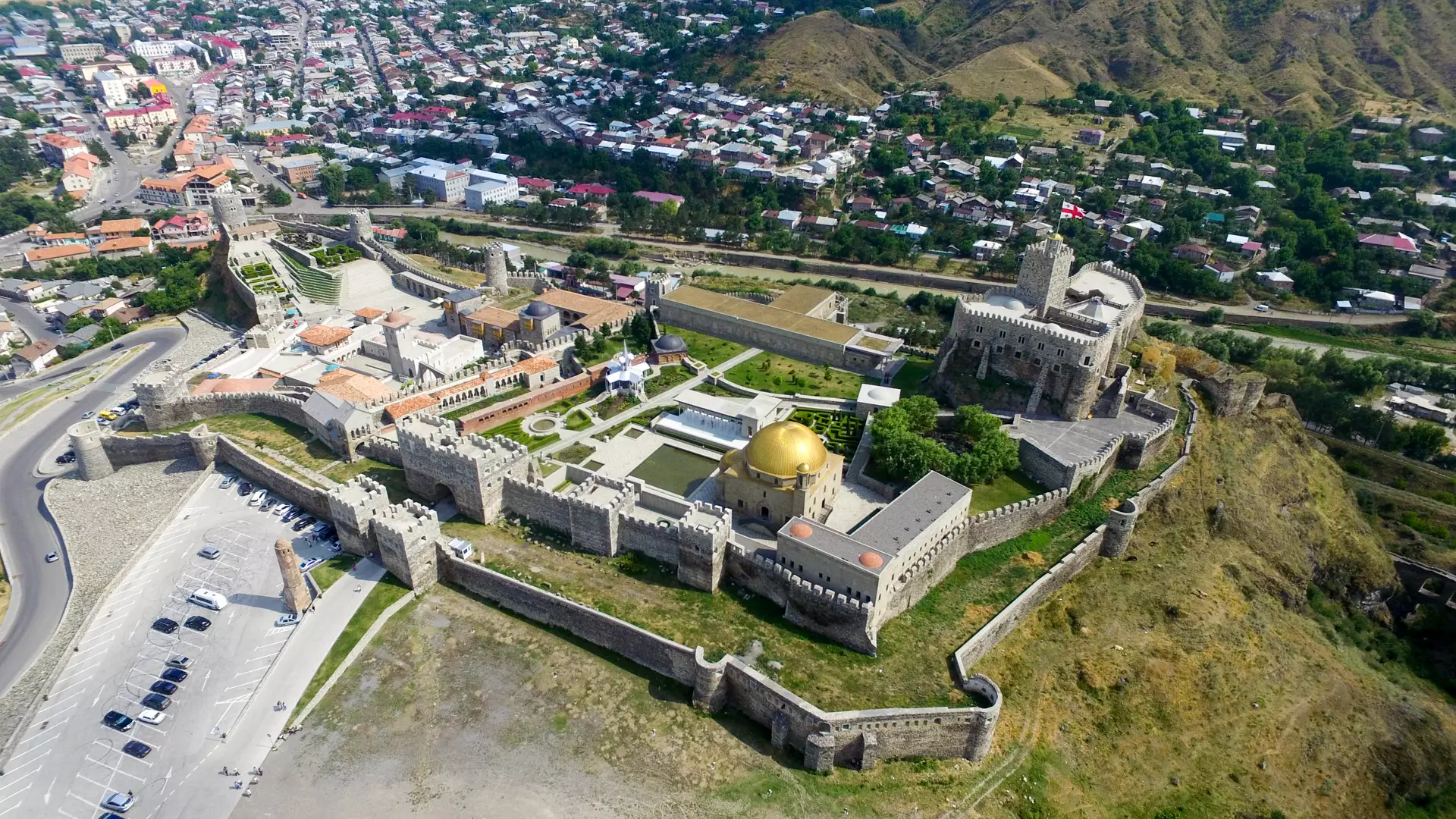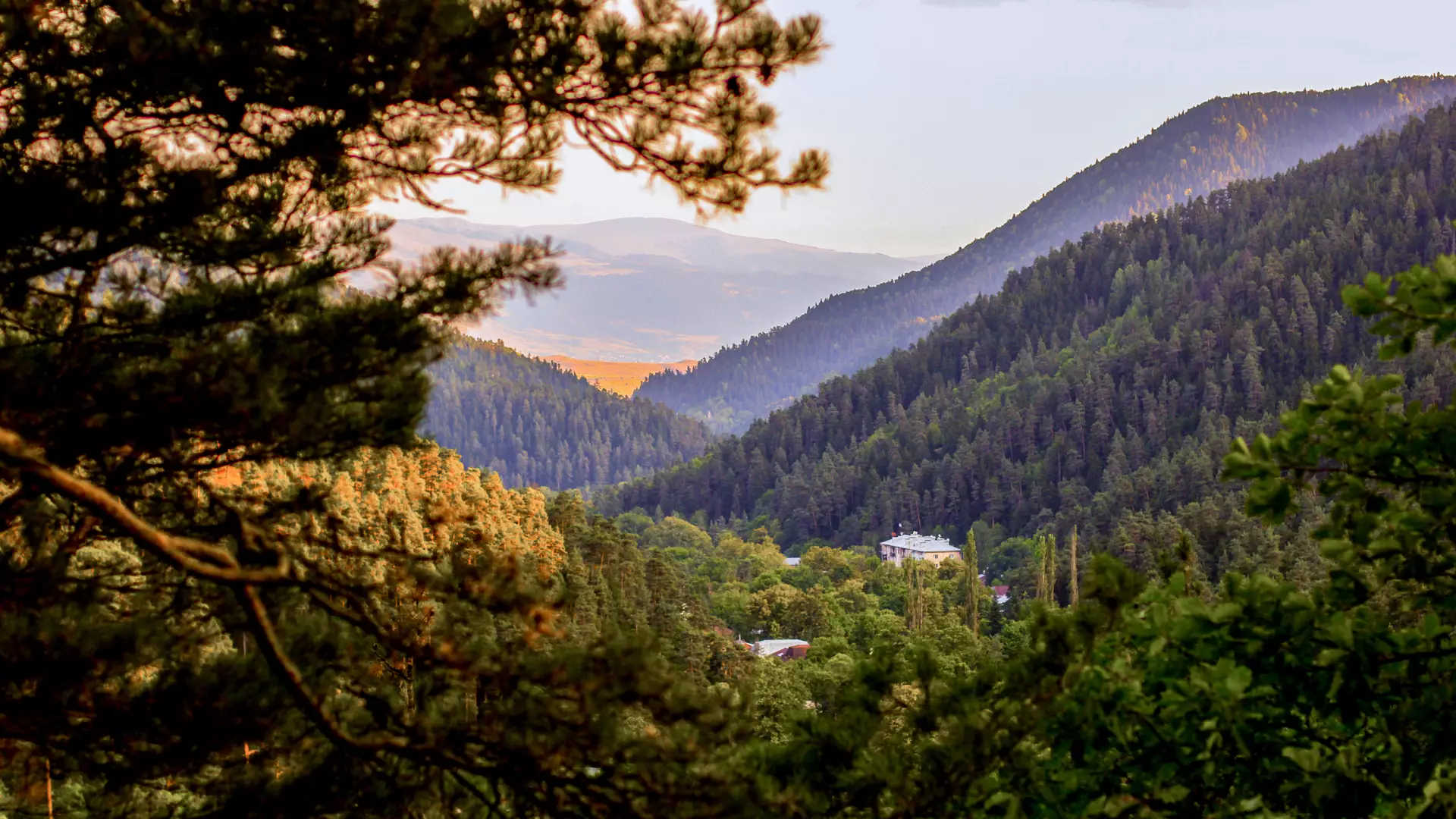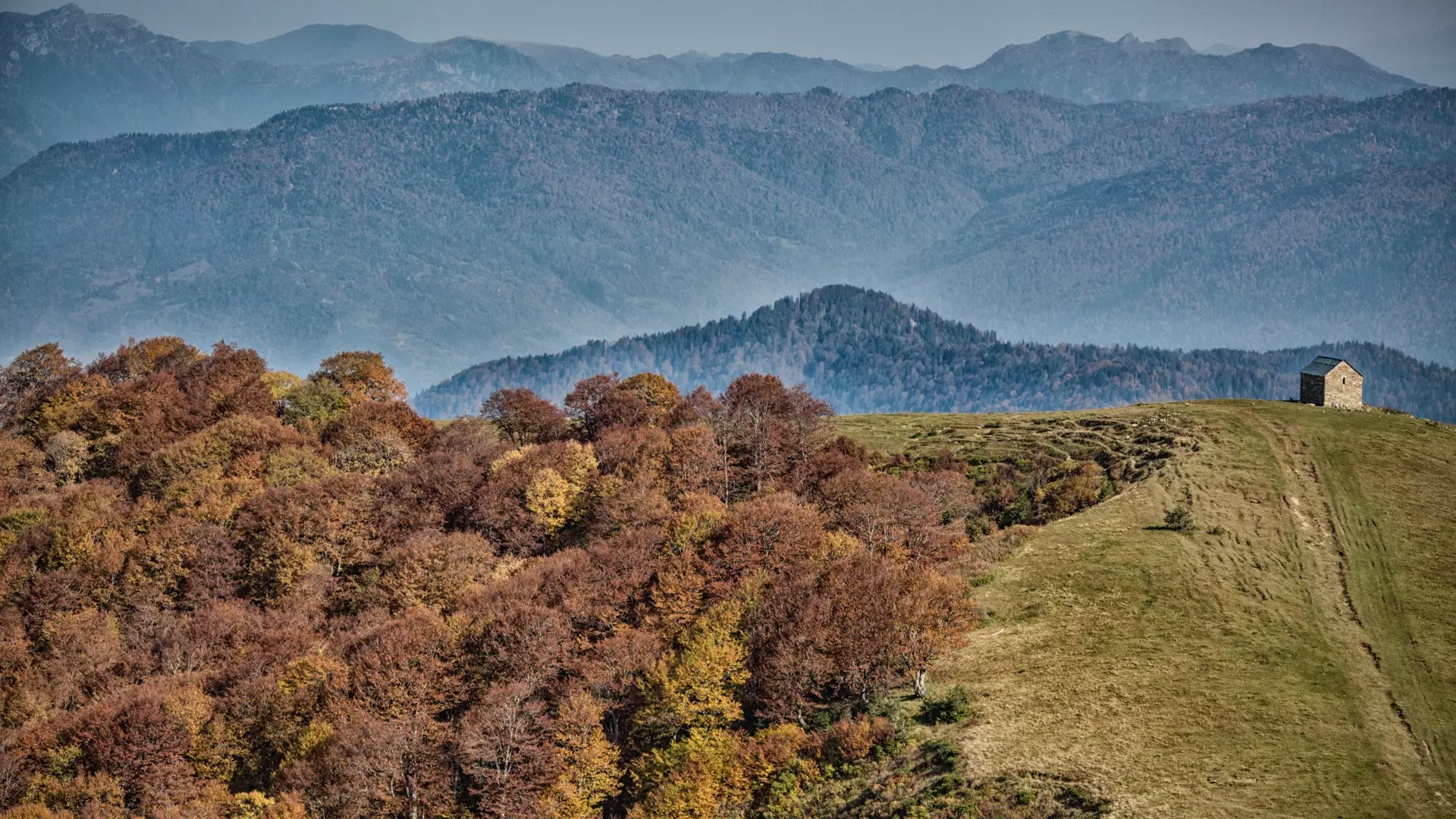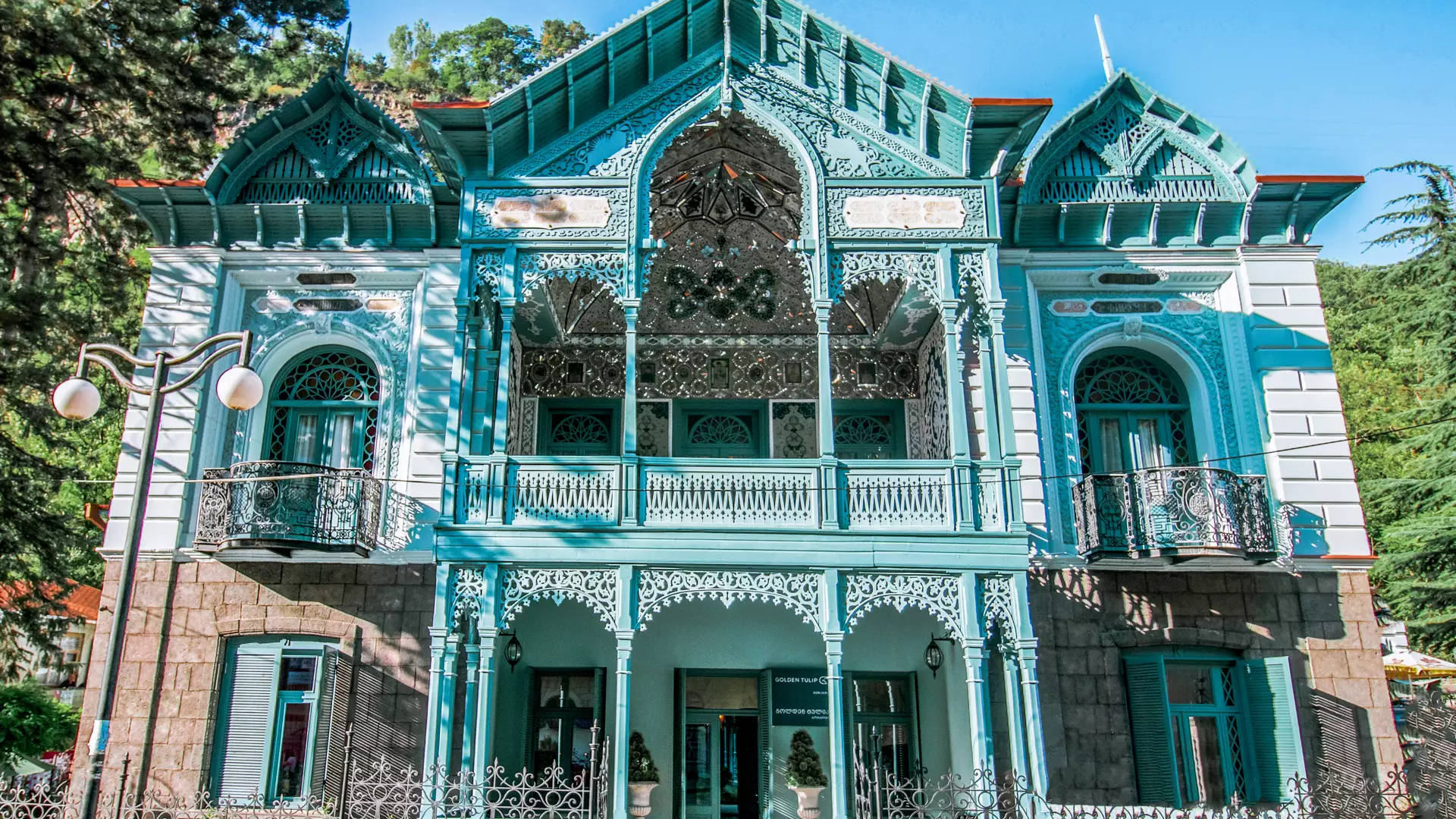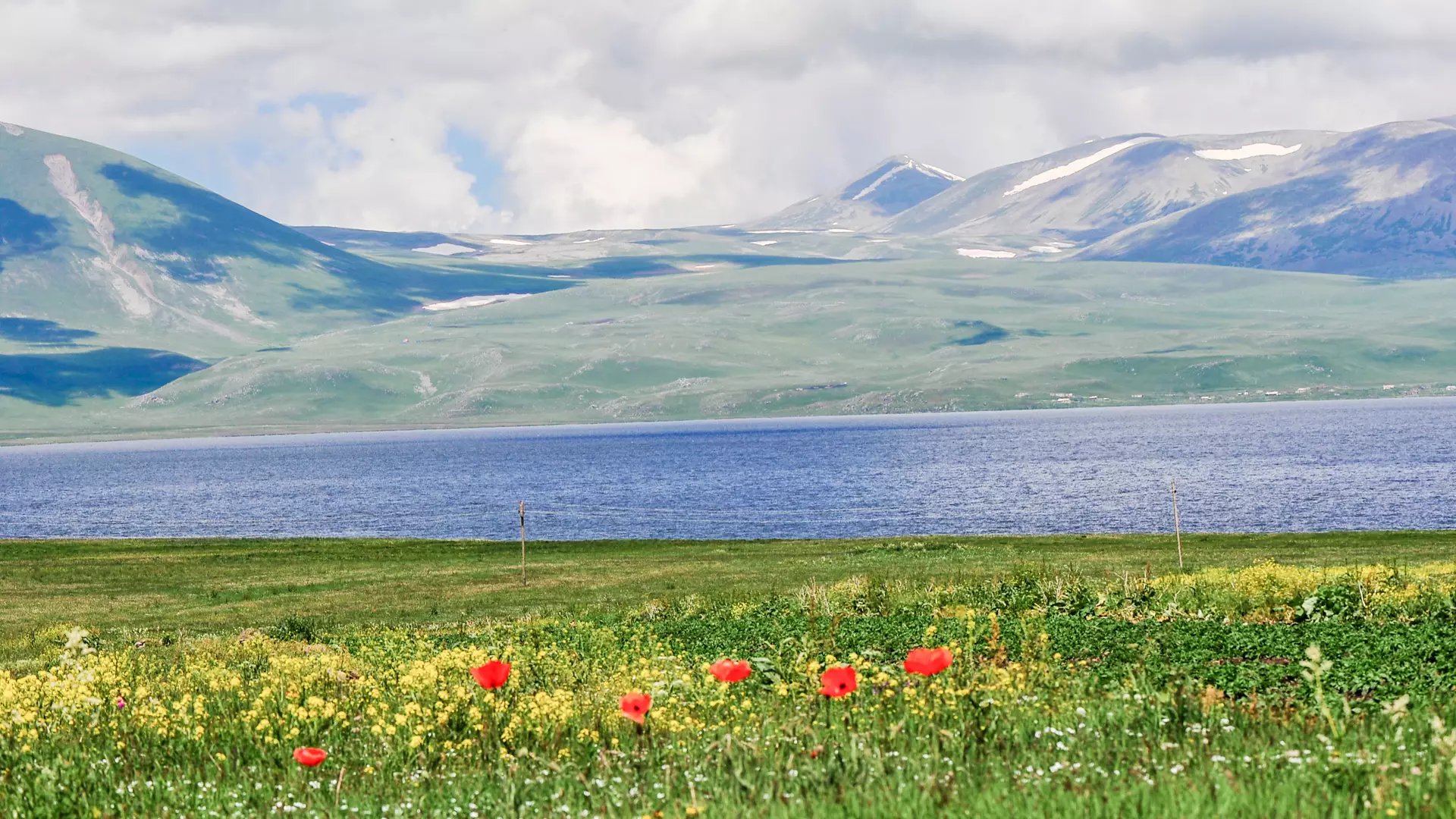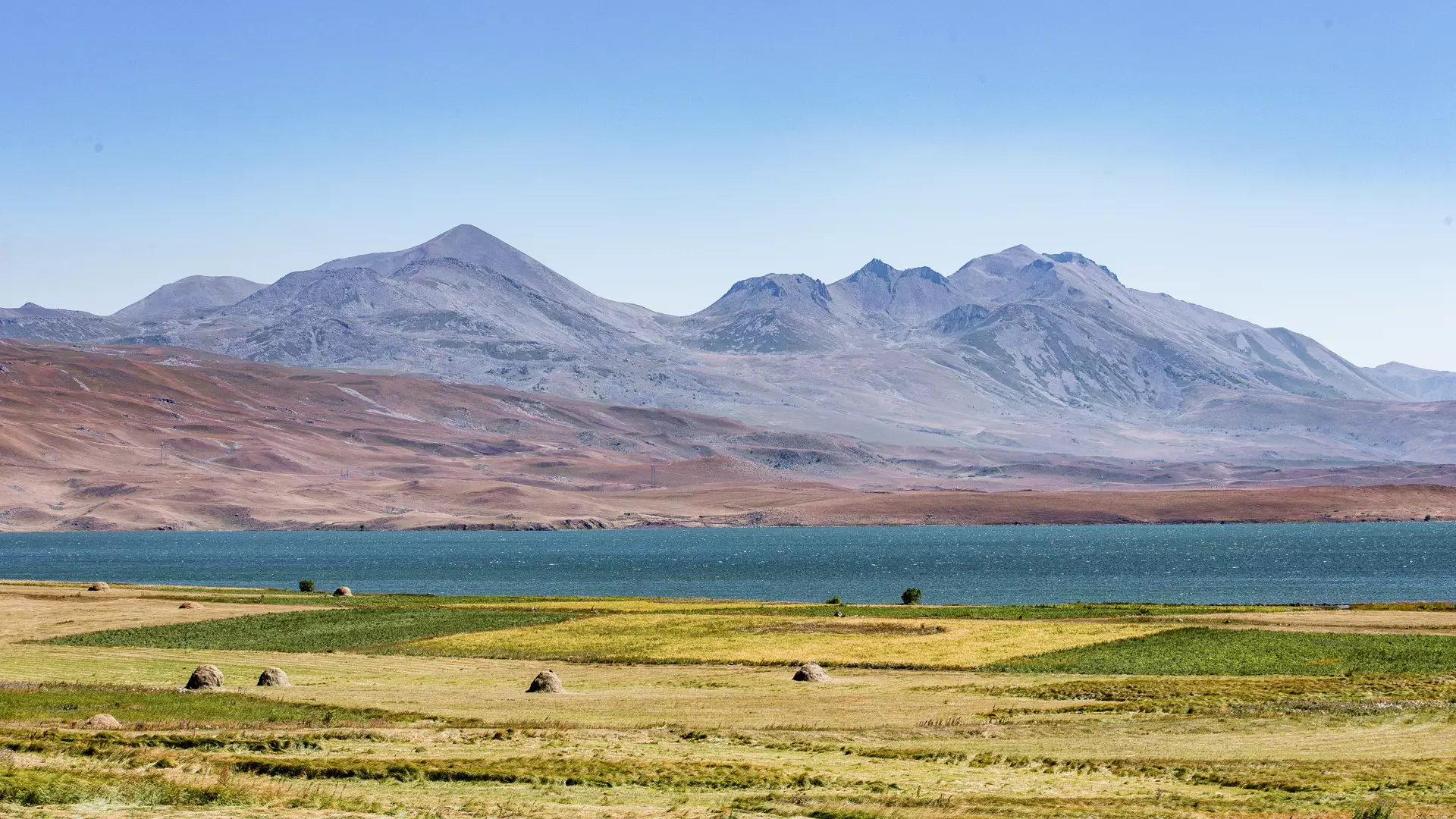9 Amazing Sights in Samtskhe-Javakheti
Location
Samtskhe-Javakheti is located in southern Georgia, on the border of Georgia and Turkey. Just for your information, there are two historical and ethnographic regions in southern Georgia, Samtskhe and Javakheti. As a contrast, eastern Georgia used to have more subregions: Kartli, Kakheti, Khevsureti, Pshavi, Mtiuleti, Gudamakari, Khando, Chartali, Khevi, Ertso-Mtianeti; and western Georgia: Imereti, Samegrelo, Svaneti, Racha, Lechkhumi, Guria, and Ajara.
As it stands today, there is one more historical and ethnographical region within the Samtskhe-Javakheti administrative unit – Tori – whose territory is situated between southern and eastern Georgia.
History
Until the Middle Ages, southern Georgia comprised numerous regions settled by Georgian peoples, such as Shavsheti, Klarjeti, Erusheti, Kola, Artaani, Palakatsio, Tao, and more, which are now situated within Turkey.
By the 12th to 8th centuries BCE, there existed in this part of Georgia, i.e., southern Georgia, the oldest union of Georgian tribes, called “Diaokhi”, which was ruled by a monarch and played a large role in the development of the Georgian state.
The name “Javakheti” is first encountered in historical sources in 785 BCE, in an inscription of the king of Urartu, Argishti I.
The name Samtskhe-Javakheti can be encountered from the 13th century.
In short, Samtskhe-Javakheti has a long and illustrious history, which has developed the unique culture, traditions, cuisine, dialect, and character of the region over the millennia.
What to See in Samtskhe: Vardzia
Vardzia is a unique city cut into a cliff, which is located in the extreme southwest of the country, on the left bank of the Mtkvari River.
This complex was constructed in a period of Georgian political strength and cultural brilliance, namely the 12th and 13th centuries, when King George III and later his daughter Queen Tamar ruled Georgia.
Before seeing Vardzia yourself, use these figures to imagine its scale:
1,300 to 1,462 meters above sea level, 13 stories are carved into a three-colored cliff, with a total area of 40,000 m2. Into those 13 stories are carved about 300 rooms with different purposes and a dozen tunnels connecting them.
Within Vardzia there are 15 churches, a refectory, monk’s cells, storage rooms, and 25 wine cellars with about 200 kvevris.
You can see portraits of George III and Queen Tamar inside of one of the churches – Vardzia Dormition of the Virgin Church – the heart of the complex.
The builders of Vardzia were aware that the city carved into a cliff would have the best natural heating and lighting, since the rooms are laid out from south to north.
The uniqueness of the Vardzia Complex, carved into the cliff, has been recognized by UNESCO as well, and they have put this extraordinarily significant monument on their tentative list of World Heritage Monuments.
Zarzma Monastery
Zarzma is a medieval Georgian architectural monument worth seeing, located 38 kilometers from Akhaltsikhe.
This grand cathedral surrounded by mountains and the ringing of the bell of its bell tower arouse intense respect and excitement, even among the local Muslim settlement living nearby.
This place was first founded as a monastery in the 9th century by the famous spiritual figure, Serapion Zarzmeli, with the help of the local prince, Giorgi Chorchaneli, turning what had, until that time, been a desert into a hotspot of Georgian culture.
The current monastery and bell tower were constructed at the beginning of the 14th century, which you can read on an inscription on a stone at the entrance to the monastery.
An interesting 10th century inscription has been obtained from one of the buildings in the church, which tells how, in 979, the Georgian King David III, the Great Kuropalates, helped the Byzantine Emperor Basil II, whose minister, Bardas Skleros, was in rebellion against him. This means there was a point in history when Byzantine needed the help of the Georgians.
Akhaltsikhe Fortress
From Zarzma you will head through the gorgeous Goderdzi Pass and descend into Akhaltsikhe, a centuries-old city, the center of historical Samtskhe and modern-day Samtskhe-Javakheti.
From every point in the city, you will be able to see the large, restored, and beautified fortress, called Akhaltsikhe Fortress, although many people know it as Rabati Fortress.
It is the district of the fortress that is called Rabati, the oldest one in Akhaltsikhe.
The history of the fortress begins in the 9th century, as an important fortification. It was destroyed during the wars of the 11th century, and then, in the 12th century, a new city was constructed in the same place by the local nobleman, Beshken II Jaqeli, on the orders of King David Aghmashenebeli. It was at that time the place was called “Akhaltsikhe”. During the 12th and 13th centuries, the fortress was the residence of the Jaqelis.
Now, the Samtskhe-Javakheti History Museum is in the palace of the local nobles, Jakelis. It is also a place you definitely should go see.
Rabati Fortress covers seven hectares and is divided into two parts: in the lower part there is modern tourist infrastructure, with a restaurant, café, garden, hotel, wedding hall, souvenir shop, and an information center. The historical buildings and the museum are in the upper part.
Abastumani
This is the place where the sky that was promised above awaits.
Abastumani is a unique resort with rather dry air and pine grove forests which are indispensably therapeutic for the lungs, and it also has therapeutic thermal waters.
On Kanobili Mountain, in Abastumani, 1,700 meters above sea level, you will find the Abastumani Astrophysical Observatory. Here various kinds of astronomical research is conducted, but observing celestial bodies requires a good astro climate, meaning clear air, practically windless weather, cloudless days, and many of the same kind of nights. That is how Abastumani is. There are so many stars visible in the sky there that you might believe they all gathered together for you to see them on purpose.
Borjomi-Kharagauli National Park
Borjomi-Kharagauli National Park is located within the Samtskhe-Javakheti, Imereti, and Shida Kartli Regions, covering a total of 1,093 km2. It is a treasure of Samtskhe-Javakheti and one of the largest national parks in Europe.
This place has a different kind of rain, and after the rain the ground has a different kind of smell, since there is no asphalt and no concrete there. There is green grass on the subalpine and alpine meadows and footpaths leading through the endless nature, where you will encounter rare plants and hear the twittering of birds along the whole way.
You can set up multi-day tours through the park, including ones on horseback, staying the night in shelters set up throughout the park, and experiencing unforgettable emotions.
What Can You Expect in Historical Tori?
As we said at the beginning, the Samtskhe-Javakheti administrative unit contains the historical region of Tori, which is essentially coterminous with Borjomi Region. Javakheti is to the south, and Samtskhe to the west.
Two of Georgia’s unique resorts are located within historical Tori:
Bakuriani – This is the country’s oldest ski/mountain resort, with a history of two centuries, and which is nowadays known as a ski/mountain center of international significance.
This small town is a perfect place for relaxation, entertainment, and adventure. You can escape the heat there in summer and going skiing there in winter.
The season of snow and all kinds of winter sports lasts from December to March in Bakuriani. There are 23 mountain/ski courses there, with 17 cable cars running. Spring and summer are the time for extreme summer sports. Bike paths of international quality have been set up for cycling enthusiasts, and the Bakuriani Botanical Garden is a true paradise for hikers, being close to Bakuriani, on the southwestern slope of the Bakuriani Range, 1,700 meters above sea level.
The mountains, crystal-clear air, long sunny days, and fir and beech forests are perfect, no matter the season, for a long vacation, or just to spend a nice weekend.
If you climb up the beauty of Bakuriani, Didveli Mountain, then a magical panorama awaits you at 2,800 meters above sea level. On one side you have the massive peaks of the Caucasus Mountain range, and on the other you have the gorgeous passes of Tsikhisjvari and Tskhratskaro.
Borjomi Resort
There is one more resort in Samtskhe-Javakheti, in historical Tori, with a world-famous name!
Borjomi is a place where both the air and the water have healing properties – a balneological and climatic resort. It is located on both sides of the Mtkvari River, in a valley evergreen, lovely any season of the year.
It is possible that at some time there has been a bottle of the unique Borjomi mineral water on your dining table, since this wonder of Georgia’s nature is familiar to 40 countries in the world.
This water comes up here, from the depths of the earth in Borjomi, enriched along its way by the minerals of the Caucasus Mountains, used to treat and prevent an uncountable number of diseases.
There are numerous important medieval monuments around Borjomi, which will be interesting for any traveler who loves history.
And also, while you are in Borjomi, you should not miss out on this:
There is a small train, opened in 1902 between Borjomi and Bakuriani, running on narrow-gauge, which is known locally as “Kukushka”. The train follows a 37-kilometer-long line through the magical Borjomistkali River valley, passing over the so-called Eiffel Bridge, built over the Tsemistkaro River, and designed by Gustave Eiffel. Yes, that Eiffel.
What Will You See in Javakheti?
If you have not yet heard about the mystical beauty of Javakheti, then a whole set of emotions and feelings awaits you there. The major sights of that region are the lakes, which are frozen in winter and colorful in summer, full of rare migratory birds in the right season.
Paravani Lake
In terms of surface area, Paravani Lake is the largest lake in Georgia, and also the most full of fish. It is located between the Samsari and Javakheti Ranges, 2,073 meters above sea level.
Even in the hottest days of the summer, the air temperature there never exceeds 20 to 22 degrees, with green grass and colorful flowers all around the lake, while in winter the lake freezes over and everything around turns to white. The local fisherman fishing on the frozen lake looks like a scene from a fantasy film.
There are some historical monuments from the Bronze Age and the Middle Ages around Paravani Lake: the cyclopean fortresses of Abuli and Shaori, Gandza Menhir, Gandza Church, Poka Church, and more.
If you also go to Poka Village to see the 11th-century Poka Church, where the St. Nino Nunnery is located, then you can buy souvenirs and candies made by the nuns at the little shop.
There is a legend that says that Saint Nino the Cappadocian, who brought Christianity to Georgia, came through the mountains of Javakheti, first stopping there, meeting shepherds from Mtskheta, coming to Mtskheta thereafter.
Every year, on the 1st of June, the day of Nino entering Georgia is celebrated, with believers starting their pilgrimage to Mtskheta from Poka Monastery.
Tabatskuri Lake
This lake and its surroundings are unique in their beauty. Just imagine it: an alpine lake nestled in the mountains, with now rocky, now sandy, and now cliffside shores, an island cut into the lake with tiny houses and even a church, lovely little ducks floating calmly on the surface, with white wings and white heads, who are not even afraid of hunters, because the lake and everything around it are protected territory, so coming here with a gun is prohibited, to say nothing of hunting.
There is a village on the lake, and the island in the lake is part of that village. The village is also called Tabatskuri.
Tabatskuri Lake is 1,991 meters above sea level. If you are at Bakuriani Resort, then you can pass through Tskhratskaro Pass to get to Tabatskuri (about 30 kilometers, one way). You will climb up to 2,100 meters to the pass, nearly reaching the clouds, and golden lammergeyers may fly over your head, so you should keep your camera at hand at all times.
That road is closed in the winter, and you will only be able to get there from Bakuriani with a snowmobile. The lake freezes over for a few months and the whole place turns white and dazzling to the eye.
Cookie Policy

